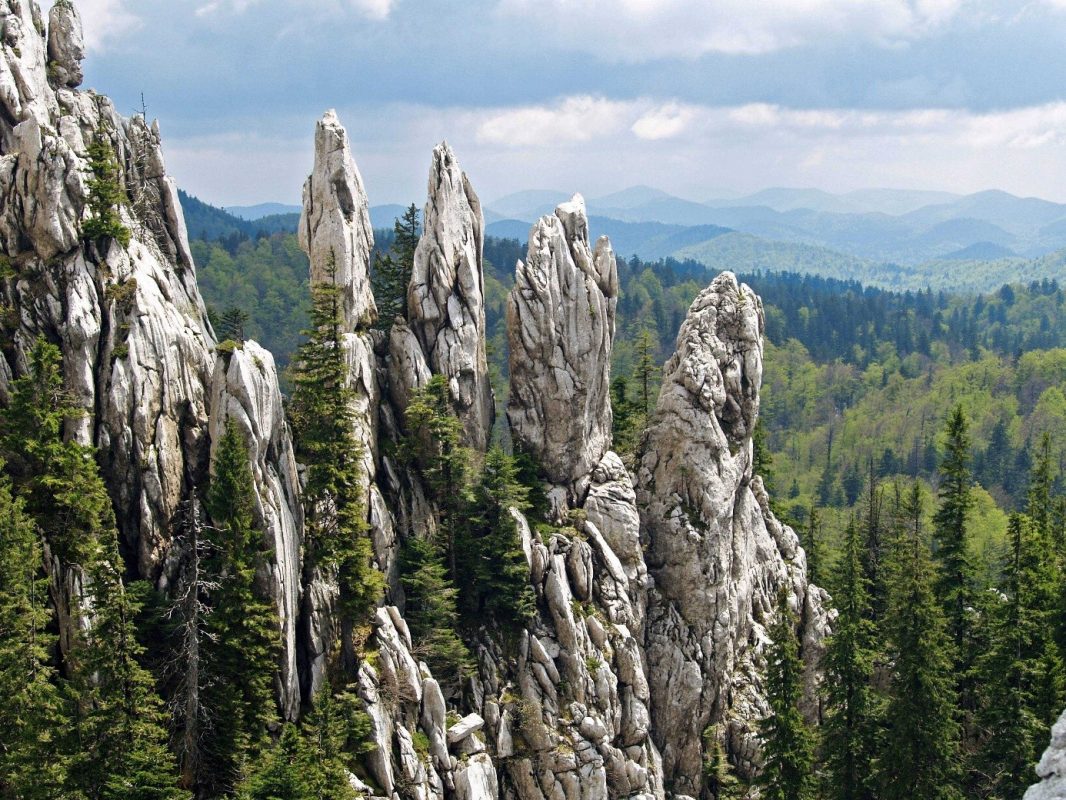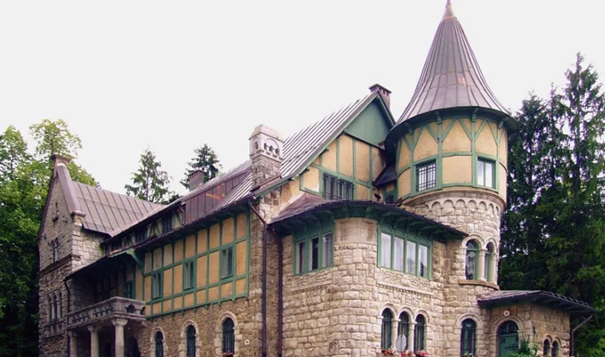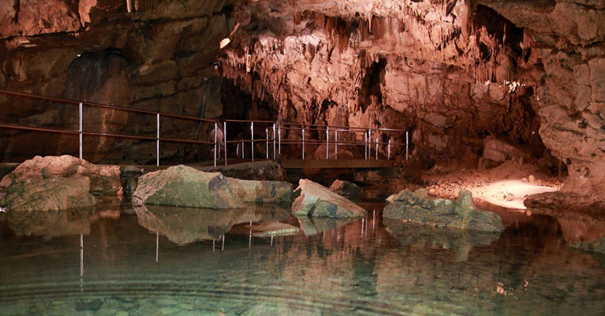Gorski Kotar is the green heart of Croatia, a mosaic of forests, lakes, and peaks not meant for the faint of heart when looking down. The centuries-old traditions of its people can be seen at every step – steps your smartwatch will count quickly toward your daily goal, thanks to the countless walking trails that lead you through nature beyond imagination.
The Wild Beauty of Gorski kotar – Shaped by Wind, Ice, and Time
The White and Samarske Rocks, at the heart of a strictly protected reserve within Gorski Kotar, form a unique karst labyrinth of limestone towers, pinnacles, and deep sinkholes. This area enjoys the highest level of nature protection in Croatia – even stricter than that of a national park. Sharply sculpted by erosion and freezing, the rocks create “stone forests” offering breathtaking panoramas.
The trails and approaches to the rocks are demanding and intended for experienced mountaineers with full hiking gear. Just below the peaks, hikers can rest in two mountain huts. Between the massive rock blocks, fir and beech forests survive, along with rare ferns and cool hollows that hold snow all year round.
This area symbolizes the wild, untouched beauty of Gorski Kotar and encourages responsible, cautious exploration of nature. Those who venture close are always rewarded with awe-inspiring sights. One of the most remarkable among them are the “White Fingers”, five stone spires reaching toward the sky like an open hand. Equally impressive is the Dolac with its “chapel”, an amphitheater-shaped hollow surrounded by 50-meter cliffs, accessible through a narrow passage beneath the rock known as the Elephant’s Chin.

The Croatian Hogwarts Among the Peaks of Gorski kotar
In the heart of a centuries-old forest, at an altitude of 800 meters and only 5 kilometers from Ravna Gora, stands Stara Sušica Castle – a historical gem of Gorski Kotar, now managed by the Youth Center (Dom mladih).
Stara Sušica was first mentioned in the 14th century, during the Ottoman incursions. The Frankopan and later Zrinski noble families defended the Gorski Kotar region, though the invasions of 1525, 1578, and 1585 left their mark. On July 22, 1786, the small Church of St. Anthony, located opposite the present-day castle, was plundered and burned, yet the old Frankopan fortress never fell — this is the first written record of the stronghold and its subjects in Sušica.
Surrounded by untouched flora and fauna, the castle today serves as a children’s retreat and educational camp, hosting nature schools, weekend and week-long programs, winter and summer camps, as well as sports, language, creative, music, art, drama, and computer workshops.
Because of its fairy-tale appearance, the castle is especially popular among children and has earned the nickname “the Croatian Hogwarts,” after the famous wizarding school from the Harry Potter films.

Lakes Bajer and Lepenica – A Paradise for Walking and Cycling
If you’re looking for a walk that combines ease with postcard-perfect mountain scenery, Fužine has just the thing — a completely flat trail forming a gentle loop that connects Lake Bajer and Lake Lepenica. Thanks to its proximity to the motorway, Fužine is surprisingly easy to reach, and once you arrive, the place quickly teaches you to slow down and enjoy a calmer rhythm of life.
The atmosphere changes beautifully with the seasons: in spring, the air is filled with the scent of blooming flowers; in summer, the lake shimmers under the sunlight; autumn paints the surrounding forest in every shade of brown and gold; and in winter, the walk takes on a peaceful silence that’s hard to find anywhere else.
The trail’s difficulty is rated 2 out of 5, with a length of 6.3 kilometers — an easy two-hour walk that won’t trouble your knees (trust us, we’ve tried it!). Besides hiking, this area is also famous for its many cycling routes — there are as many as 15 of them, each with detailed descriptions, difficulty levels, and bike-type recommendations available online.
For those who don’t mind breaking a sweat, we recommend taking the time to climb Preradović Peak, offering the most stunning view of Fužine and its surrounding forests — a perfect spot for panoramic photos. You can also visit Vrelo Cave, one of Croatia’s most accessible and fascinating caves, located nearby.

A Cave Millions of Years in the Making
The Vrelo Cave in Fužine, though small at only 300 meters in length, is a true geological gem of continental Croatia. Its age is measured in millions of years, estimated between 3.5 and 4 million, while the oldest stalactites and stalagmites are believed to be between 500,000 and 600,000 years old.
What makes this cave particularly special is the presence of water that flows into a permanent underground stream coming from the Ličanka river basin. During rainy periods, the water level rises and creates fascinating shapes of flowstone formations. The cave is also attractive for its magnetic sand found on the stream bed. If you plan to visit, bring a small magnet – simply hold it close, and you’ll see the sand particles beautifully align.
Vrelo is completely accessible, flat, and without stairs, making it a unique example of a tourist-friendly cave in Europe that can also be visited by people in wheelchairs. Pathways and lighting lead visitors to formations called “The Bishop,” “The Virgin Mary,” and “The Dwarfs.” Although the names might sound curious, don’t worry – they refer to stalagmite and column shapes that guides will happily point out during the tour.
The visit takes about 30 minutes, and the constant temperature inside is 8°C, so make sure to dress warmly unless you’re in the mood for a “cold shower.” An added bonus is that the walking path along Lake Bajer leads directly to the cave’s entrance.